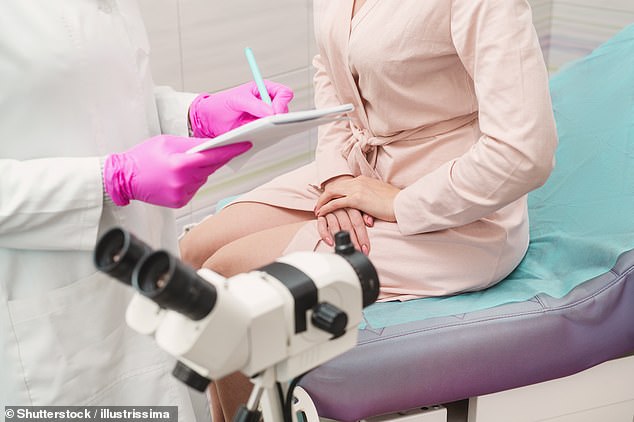I have been diagnosed with vaginal atrophy which causes terrible intimate pain. I use HRT patches as well as vagifem pessaries and estriol hormone cream, and I’m on a pain medication called amitriptyline. My doctor says there’s nothing more she can do. What would you advise?
Dr Ellie responds: Vaginal atrophy is one of the most debilitating issues that occurs following the menopause.
It occurs due to the loss of the female sex hormone oestrogen and leads to thinning and shrinking of the vulva and vagina tissue. This can lead to burning and discomfort that can last for months and sometimes years.
Hormone replacement therapy (HRT), taken via patches or pills, is the main form of treatment along with oestrogen cream which is applied directly to the vulva and vagina.
However, if this does not help, some patients benefit from something called an Estring.
This is a soft, flexible ring that is inserted into the top of the vagina that delivers oestrogen and is changed every three months.
It provides a constant supply of oestrogen which may be more effective than the cream.
Amitriptyline is a nerve pain drug that can help with burning and discomfort. If it is not effective, then a different type of nerve painkiller, like pregabalin or gabapentin should be considered.

Vaginal atrophy is one of the most debilitating issues that occurs following the menopause, writes Dr Ellie

It occurs due to the loss of the female sex hormone oestrogen and can ultimately lead to burning and discomfort that can last for months and sometimes years
Suspected vaginal atrophy should always be assessed by a doctor at a specialist vulva clinic. This is because it may, in fact, be a condition called lichen sclerosus, where white uncomfortable itchy patches appear on the vulva.
Lichen sclerosus requires different treatment to vaginal atrophy – for example, steroid creams rather than oestrogen cream. And, left untreated, it can lead to vulval cancer.
For the past 18 months I’ve had blood-coloured marks on my legs that come and go, often leaving light bruising as they fade. What could be causing this?
Dr Ellie responds: These marks sound like purpura – patches of bleeding under the skin – which can look red or purple and often fade like bruises. There are many possible causes, ranging from minor to more serious.
In older adults, the most common explanation is senile purpura, which happens as the skin becomes thinner and more fragile with age. Even small knocks can cause bleeding beneath the surface, and you may not even notice an injury.
It’s more common in women and those with a history of sun exposure.
But doctors would want to rule out more serious causes too. These include blood cancers such as leukaemia or lymphoma, or vasculitis – a group of conditions that cause blood vessel inflammation.
A low platelet count (the cells that help blood to clot) can also lead to this kind of rash, and certain medications such as steroids, aspirin or blood thinners can have an effect too.
The good news is that most of these causes can be checked with a simple blood test at your GP surgery. Anyone suffering these symptoms would be sensible to book in and discuss this with a doctor.
I AM an active 75-year-old male. But for the past six months, when I wake in the morning, I can hardly move my left leg. The GP has prescribed powerful painkillers, which I don’t want to take. Any advice would be appreciated.
THIS sounds like a nerve issue, and a proper assessment is needed now that this has been going on for six months.
Clearly overnight the nerve problem worsens, either because it is squashed or affected by fluid retention, which is why the symptoms are worse in the morning.
Numbness is typical of a nerve problem, and if it follows a very specific area – from the toe up the calf and into the hip – this would imply that specific nerves are affected, possibly in the lower spine.
All of the leg nerves originate in the spine and then travel down the legs. If there is any compression or damage to these nerves – such as from a slipped disc or spinal arthritis – it could cause this type of symptom, because the nerves are unable to work properly when squashed.
Symptoms might improve during the day when the nerve is less compressed.
The concern in somebody over the age of 75 would always be to rule out cancer. Although it is incredibly unlikely, there could be some sort of mass on the spine or in the pelvis impinging on the nerves. Nerves can also be damaged not physically but by other diseases, such as diabetes, and as a side effect of some medications – for example, chemotherapy. We call this neuropathy.
There are specific medicines we can offer that help nerve pain, but the priority now is to have an assessment, which should start with imaging of the lower spine, such as an X-ray, as well as blood tests.
The nerves themselves can be tested with something called neurophysiology, which would require a referral from your GP.
Do you have a question for Dr Ellie Cannon? Write to her at DrEllie@mailonsunday.co.uk













